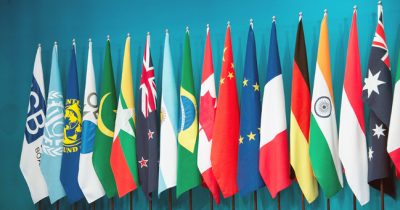Behind Closed Doors: Strategic Meetings on the Sideline of the G-20 Summit: Russia, India, US

The G20 Summit in Japan is important in and of itself, but far more significant are the many meetings that will take place between several world leaders at this event.
The G20 is always a newsworthy event that has grown in importance ever since this format was used to help coordinate a response to the 2008 financial crisis. The world’s leading economies have a stake in the stability of the international economic system, but this year that very same system is under threat as a result of the escalating “trade war” between its two largest economies. The US wants to create the conditions for changing the global supply chain, hence its tariffs and possibly other measures that it’s taking in pursuit of this end, while China is seeking to entrench itself as the core of the global economy through its Belt & Road Initiative (BRI). These contradictory objectives have led to much friction over the past year and threaten to cause immense consequences for the world economy, which is why this year’s G20 is especially significant.
While the casual observer will be waiting for the actual multilateral meeting itself to take place over the weekend, those who have been closely following events will have their eyes peeled on the other meetings that are also scheduled to occur between several world leaders, chief among them the one between Presidents Trump and Xi. The former threatened his counterpart with the immediate imposition of $300 billion worth of tariffs if he didn’t agree to meet, which was an aggressive signal of intent simultaneously designed as a form of psychological warfare against the Chinese leader. Trump is eager to clinch a deal for ending the “trade war”, though not because he’s desperate but because he’d like his envisioned victory to take place before the eyes of the entire world. There’s no better place than the G20 for that to happen, but the prospects are still slim.
Both sides have dug in the heels for what appears to be a protracted struggle for control of the global economy. The US doesn’t want to cede its dwindling leadership in this respect, ergo the efforts that it’s undertaken through the “trade war” to stem its decline and disadvantage its Chinese rival in order to gain a relative advantage. The People’s Republic, meanwhile, knows that Trump is expecting nothing less than its full capitulation, even if it’s done in a “face-saving” way to avoid embarrassing President Xi at home. In addition, China’s continued growth is dependent on securing trade routes for selling its overproduced goods to existing (Western) and developing (“Global South”) markets, with the former being more difficult due to Trump’s pressure while the latter has to contend with the Damocles’ sword of Hybrid War.
Instead of surrendering, China is seeking a creative solution to the stalemate that it’s in with the US, which is why its leader plans to convene a meeting with his Russian and Indian counterparts. RIC, the Eurasian component of BRICS, is statistically impressive given its members’ collective economic potential and enormous populations, therefore making it capable of affecting real change in the global environment. While there are unavoidable challenges to their multilateral cooperation such as the US’ efforts to “poach” India as its new “Indo-Pacific” ally for “containing” China, there are also certain commonalities between these three Great Powers that can’t be ignored either. Each of them has an interest in reforming the global economy in order to increase their role and that of their national currencies, which is something that the US opposes.
Accordingly, it’s entirely feasible that RIC might reach a pragmatic agreement to intensify economic cooperation with one another and expand their existing projects, though predictably stopping short of India’s participation in BRI, which is leverage that its leader could skillfully apply during his bilateral meetings with Presidents Xi, Trump, and Putin. In fact, it’s actually these bilateral interactions between the American, Chinese, Russian, and Indian leaders that will probably end up being the most important aspect of this event. While the RIC get-together shouldn’t be underplayed, it also shouldn’t be overestimated either, since the US will do its utmost to divide and rule these Eurasian Great Powers through Trump’s bilateral meetings with their leaders. That doesn’t necessarily mean that he’ll succeed, but just that that’s most likely his strategic intention.
*
Note to readers: please click the share buttons above or below. Forward this article to your email lists. Crosspost on your blog site, internet forums. etc.
Andrew Korybko is an American Moscow-based political analyst specializing in the relationship between the US strategy in Afro-Eurasia, China’s One Belt One Road global vision of New Silk Road connectivity, and Hybrid Warfare. He is a frequent contributor to Global Research.

